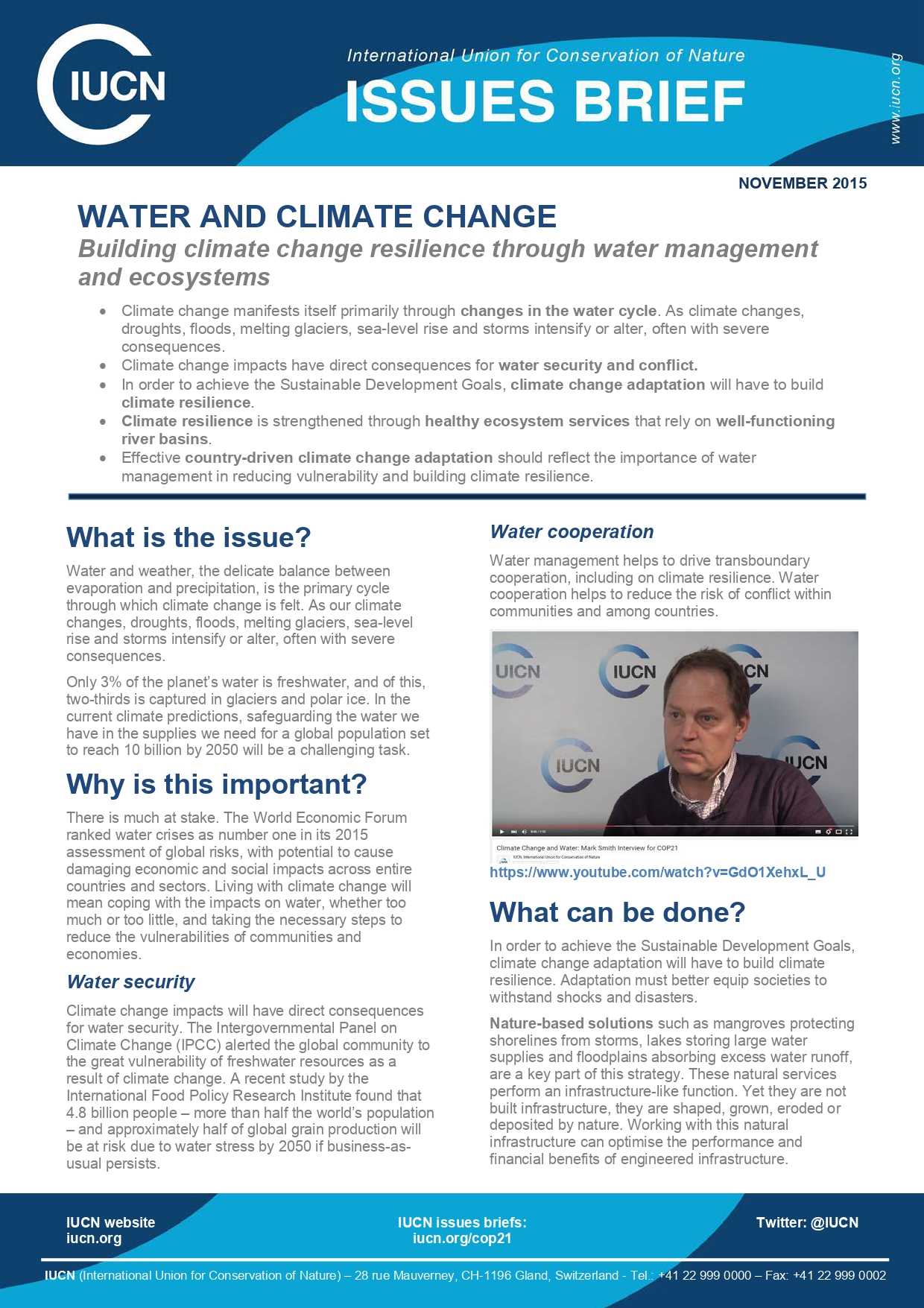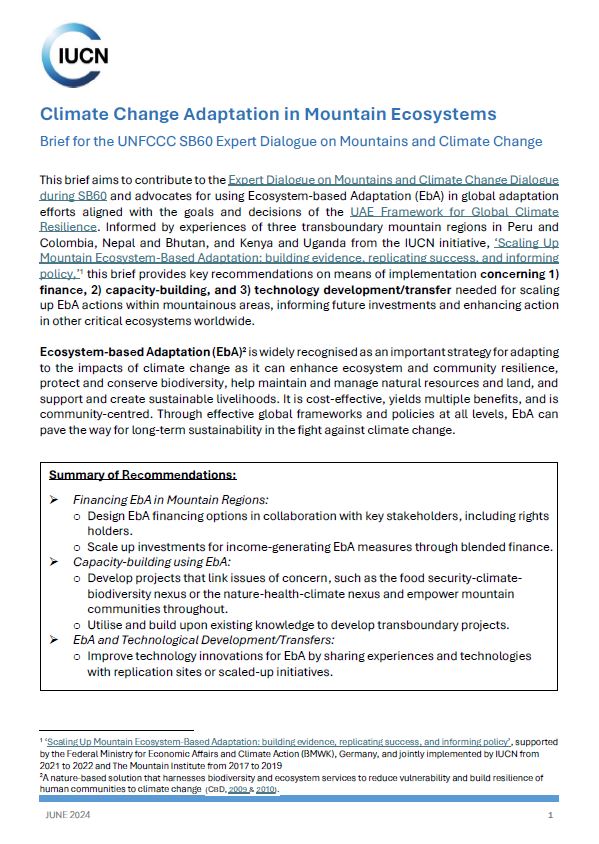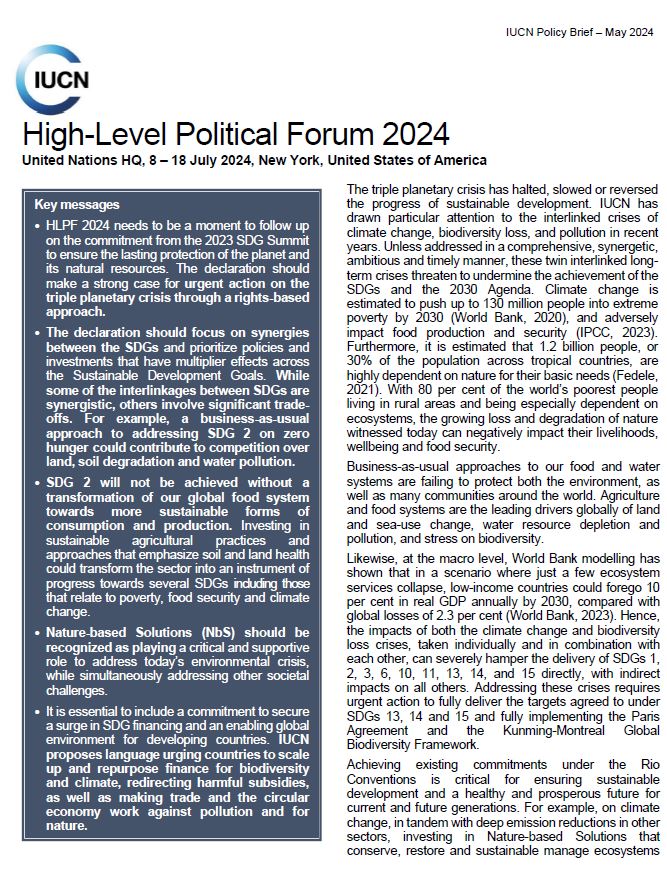Transitioning dialogue into implementation
Adaptation actions such as developing or adapting drainage or water storage, whether with built or natural infrastructure, should be implemented within this strategy. The strategy should guide policies, planning and investment across sectors, including economic planning, poverty reduction strategies, agriculture, energy and water resources development. The resilience framework is a practical means of mainstreaming climate change in development and implementing the Sustainable Development Goals.
Global dialogue on climate change adaptation must transition into implementation and country-driven action. Support for country-driven implementation can be provided through the IUCN Global Water Programme for action on water and climate change that builds on three pillars.
To guide effective country-driven climate change adaptation, activities should reflect the importance of water management for reducing vulnerability and building climate resilience, by:
1. Putting adaptive Integrated Water Resources Management (IWRM) at the centre of planning and investment for climate change adaptation. Efforts to reduce greenhouse gas emissions also depend on access to reliable water resources, as all mitigation actions need water to succeed.
2. Promoting investment and implementation that incorporates management, restoration and sustainability of ‘natural infrastructure’ – the ecosystem services provided by healthy watersheds and coasts – and their benefits for climate resilient development of the food and energy sectors.
3. Supporting actions at scale to build climate resilience by combining watershed management, sustainable infrastructure, empowerment and learning through adaptive institutions.
Climate-driven water hazards risk setting development off track. If we are to achieve climate and development goals, water must be at the core of adaptation strategies. Water is also important to achieve mitigation targets. IUCN supports and assists climate change adaptation through its global network of members and partners, covering Latin America, Africa, the Middle East, Asia and Oceania.







